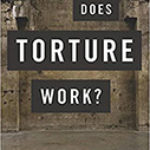Courting The Community: Legitimacy And Punishment In A Community Court

Author: Christine Zozula
Publisher: Philadelphia, PA; Temple University Press, 2019 184p.
Reviewer: Tyrell A. Connor | March 2020
Problem-solving courts have been a significant contribution and a leading solution among the contemporary practices of criminal justice reform. Beginning with drug courts in the late 1980s, specialized courts have rapidly grown in number and variation. Community courts are beginning to gain traction and prominence within the problem-solving court movement. Community courts specialize in handling low-level, quality of life offenses such as littering, loitering, public drunkenness, and prostitution. Their goal is to become a resource for communities, and to simultaneously address low-level crimes that conventional courts may overlook. In doing so, these courts aim to restore community values and efficacy by prioritizing non-traditional court mandates such as drug treatment, educational programs, and job readiness programs. Despite these developments, research on community courts is sparse. Christine Zozula’s book, Courting the Community: Legitimacy and Punishment in a Community, introduces readers to the world of community courts via a thorough ethnographic exploration of the Greenville Community Court located in the northeast region of the United States.
Courting the Community provides an in-depth overview of the day-to-day operations in a community court, which will be welcomed by any reader looking to be introduced into this world of specialized courts. At the same time the book provides a satisfying and nuanced examination of the theoretical and practical operations of community courts for anyone already well-versed in problem-solving justice.
Zozula introduces her work by discussing the nature of culture and punishment, and asserts that this project aims to show that “punishment is not monolithic.” Through channeling the work of David Garland, the author masterfully sets up the foundation of her book to illustrate how punishment influences and shapes culture. Her goals are to demonstrate how community courts produce identities for offenders and the court, and how the courts navigate between traditional approaches of justice (retribution) and more innovative approaches (rehabilitation).
In chapter one, the author reviews the primary theoretical motivations for creating community courts. “Broken windows theory” is heavily emphasized in these courts, and is practiced through their intentional focus on low-level and quality of life offenses. Like other problem-solving courts, community courts adopt a model of therapeutic jurisprudence as their guiding legal philosophy and practice. Finally, community courts incorporate restorative justice principles into their ‘punishment’ mandates that aim to accomplish reintegrative shaming.
Chapter two provides a historical description of how U.S. based criminal justice practices went from a rehabilitative focus to a more punitive-centered approach in the 1980s and 1990s. The author also describes the development of the nation’s first community court, Midtown Community Court in NYC, and how that lead to the birth of the movement. In chapter three, Zozula begins to dive into her analyses, and explores the procedural aspects of the Greenville Community Court. She vividly paints a ‘day-in-the-life’ picture of that court and how the various courtroom actors interact within the organization.
Chapter four looks at how the community court culture produces identities for the offenders and the court. Zozula highlights Tom Tyler’s work on legitimacy and connects it to how community courts build organizational legitimacy through their interactions with defendants in order to gain compliance. This chapter unveils the various mandates from community service, drug and mental health treatment, while using the threat of incarceration as motivation. Zozula eloquently explores the paradoxes of guilty pleas and judicial motivations in this chapter as well. She ends this discussion by questioning how success is measured within community courts and, what that means for the community.
Chapter five, arguably the most compelling chapter, introduces a concept called ‘ambivalent justice.’ It is here that Zozula demonstrates how they sort “defendants into moral categories by virtue of how they responded to Greenville Community Court sanctions” (pg. 103). Greenville employs different levels of leniency and severity depending on the types of the recommended treatment. She explains how the court uses a defendant’s overall performance in the programs to determine who are ‘deserving offenders’ and those who are ‘undeserving offenders’.
Chapter six explains how the Greenville Community Court engages with the community through marketing strategies. It is in this discussion that Zozula expertly conveys what it means to be a ‘flexible organization.’ She chronicles her experiences, observing different court personnel in community settings and how they strategically market the court to match the potential guiding principles of the audience. In the concluding chapter, the author reiterates her major findings and questions the overall impact of community courts. She recognizes how flexible organizations work in other institutions like education, but reinforces the notion of how punishment serves as a cultural agent making community courts unique. She concludes by questioning what it means to punish quality of life offenses, and whether the court should be used to create community.
Courting the Community is a deep analysis and critique of community courts and problem-solving justice in general. The only criticism here is that there is a lack of sufficient exploration of how race may play a role in community court justice. To the author’s credit, racial influences and implications were mentioned sporadically throughout the book, particularly when highlighting potential class inequalities in court outcomes. Past and current research have, however, reliably demonstrated how racism is very pervasive in the criminal justice system. Therefore, including a chapter solely dedicated to racial dynamics, outcomes, and influences within the lens of ambivalent justice and flexible organizations would have further strengthened and broadened the scope of these findings.
Community courts are an under-studied, yet widely praised innovative practice in problem-solving justice. Christine Zozula successfully and skillfully takes the reader through a compelling journey of innovative justice that not only adequately informs, but boldly critiques, in the spirit of justice and equality.
Assistant Professor, Dr. Tyrell A. Connor, Director of Criminology Concentration, Sociology Department, State University of New York New Paltz


